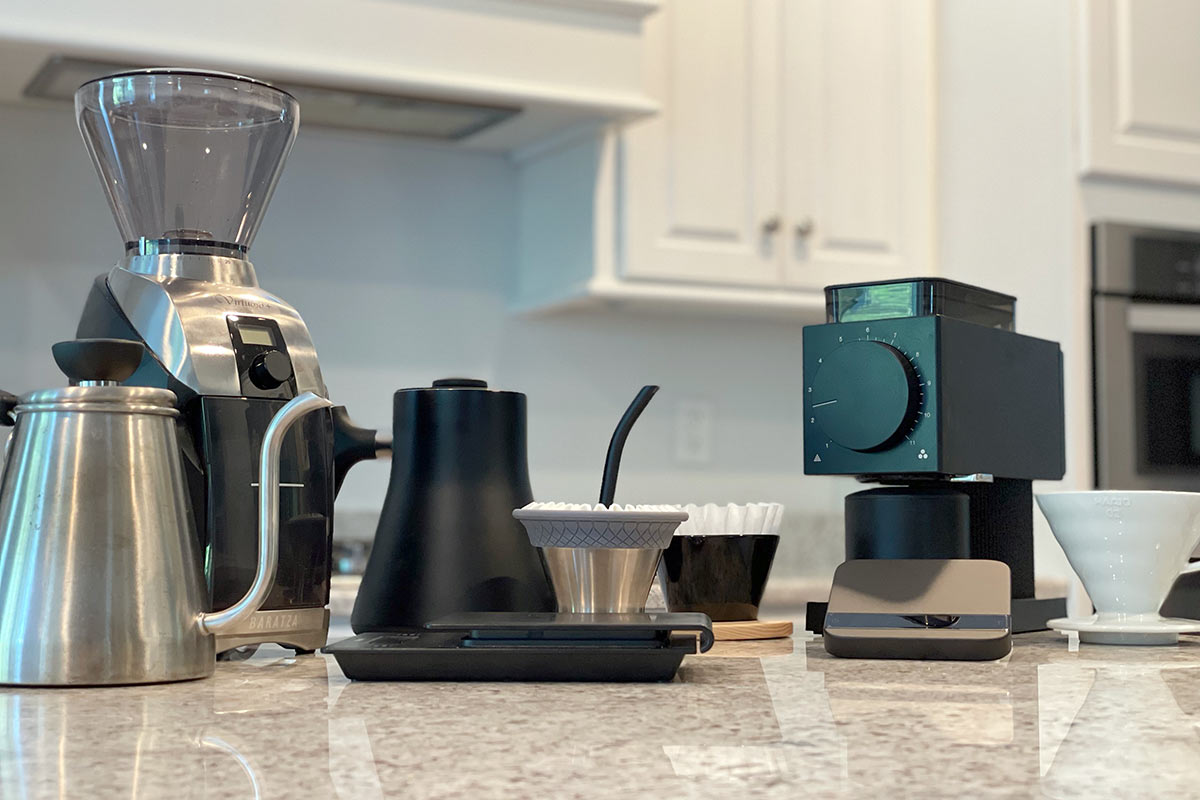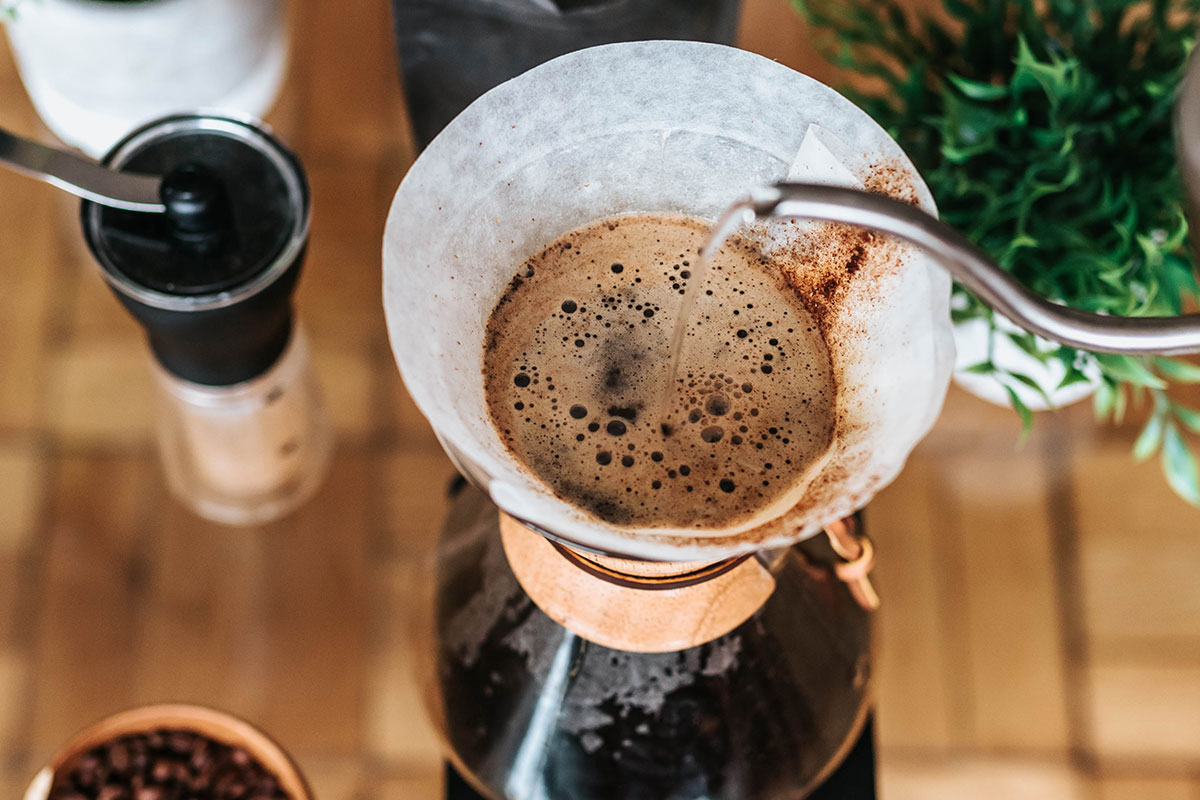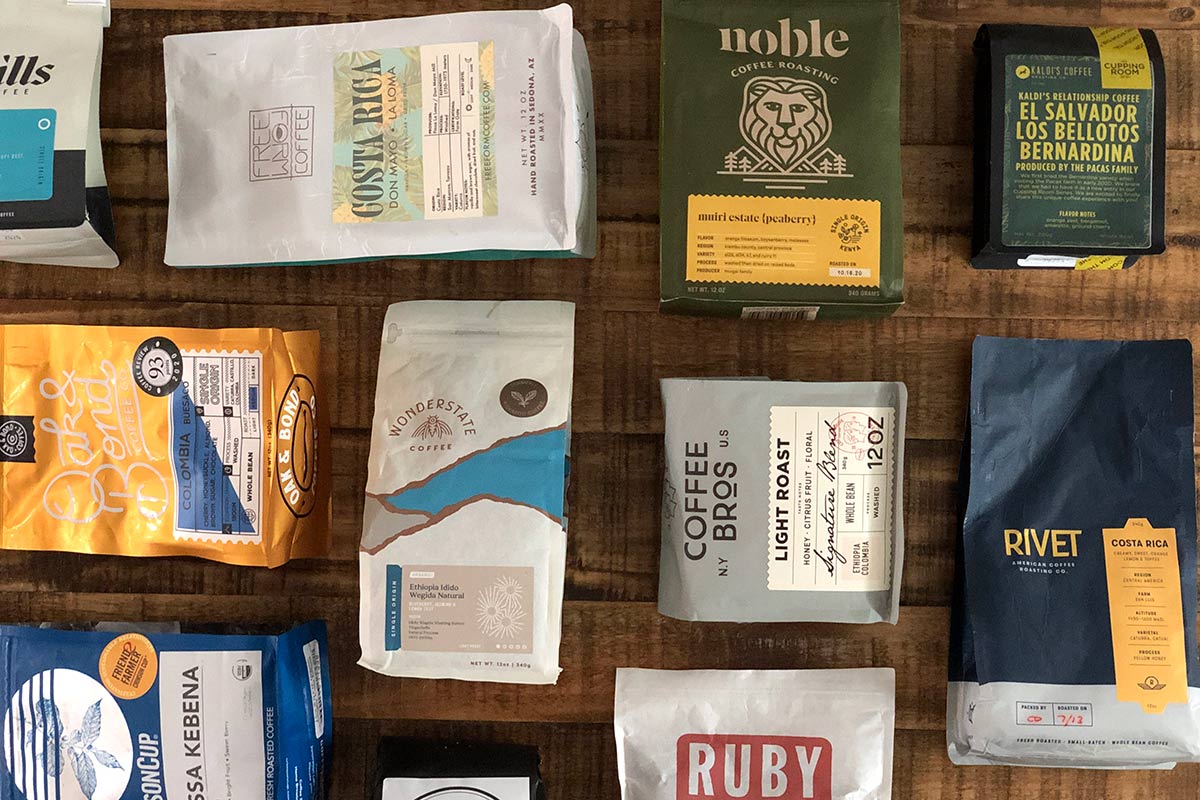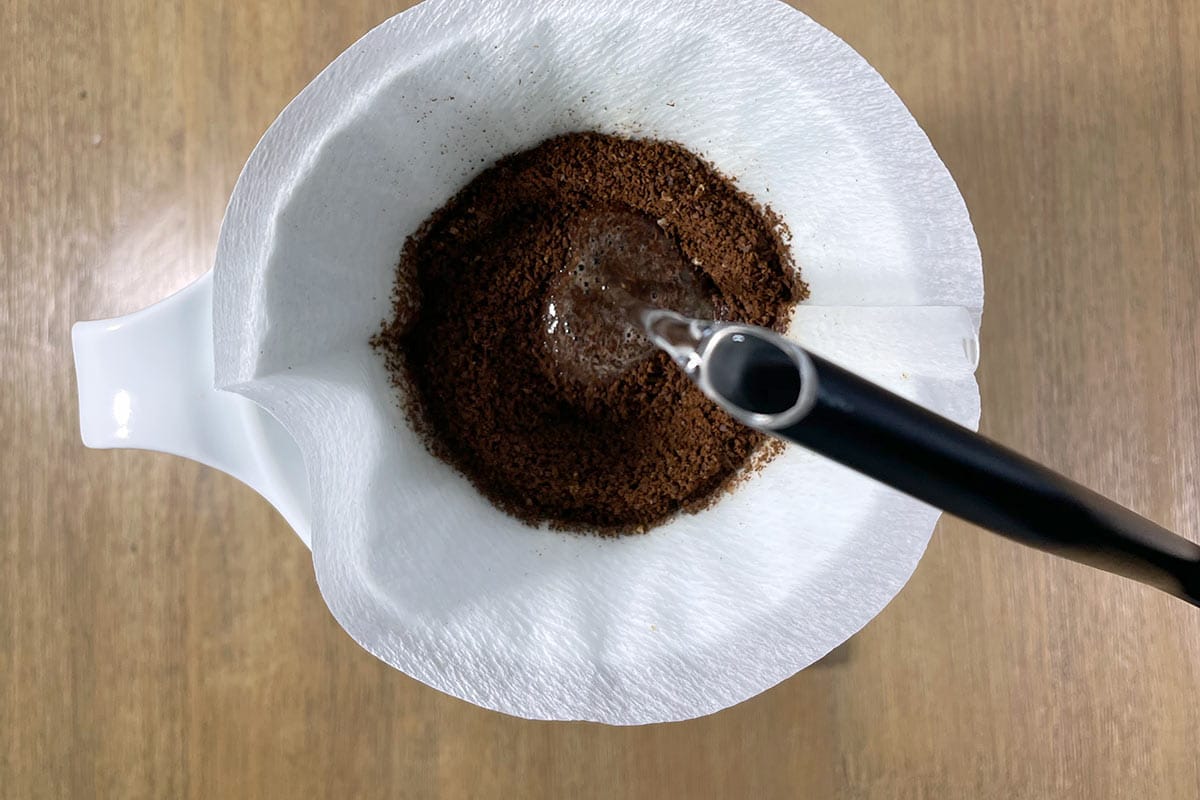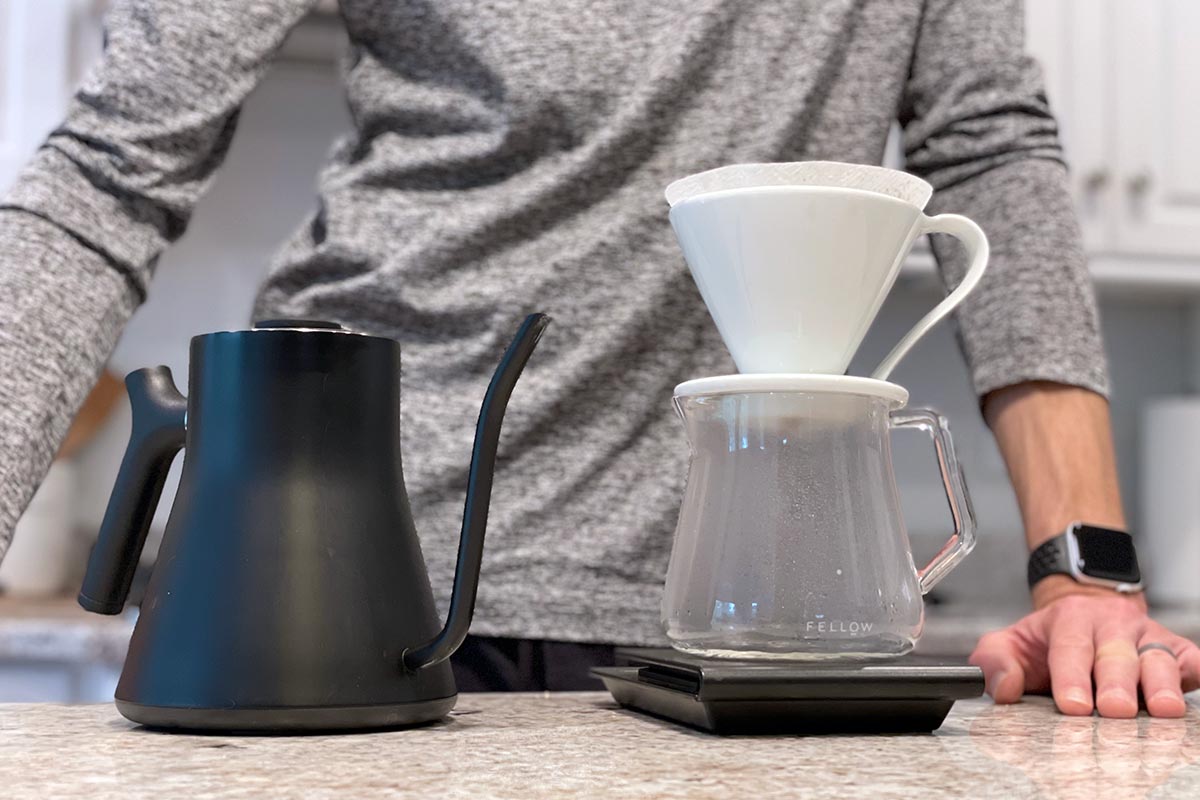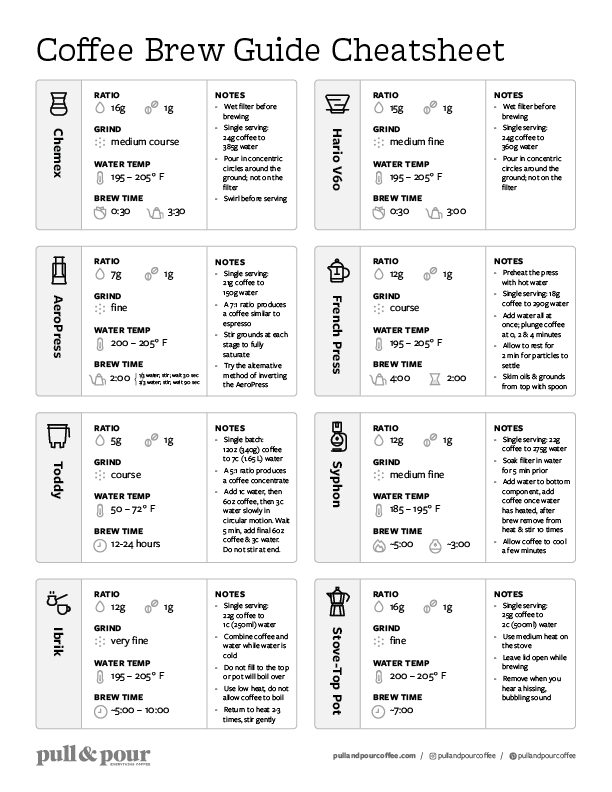Whether you are new to coffee or an experienced home brewer, it can be overwhelming to know what coffee products to purchase both to get started and to “up your game.” In this guide, I will walk you through the key pieces of equipment to consider when building your at-home coffee equipment arsenal. While we make a few product recommendations based on our years of expertise from brewing coffee at home, the products we suggest aren’t exhaustive. The primary focus of the article isn’t what specific products to purchase, but instead what types of products you should look for when building your at-home coffee kit.
If you have already been brewing for a while and would like to level up your coffee setup, feel free to jump ahead to the next section of the article.
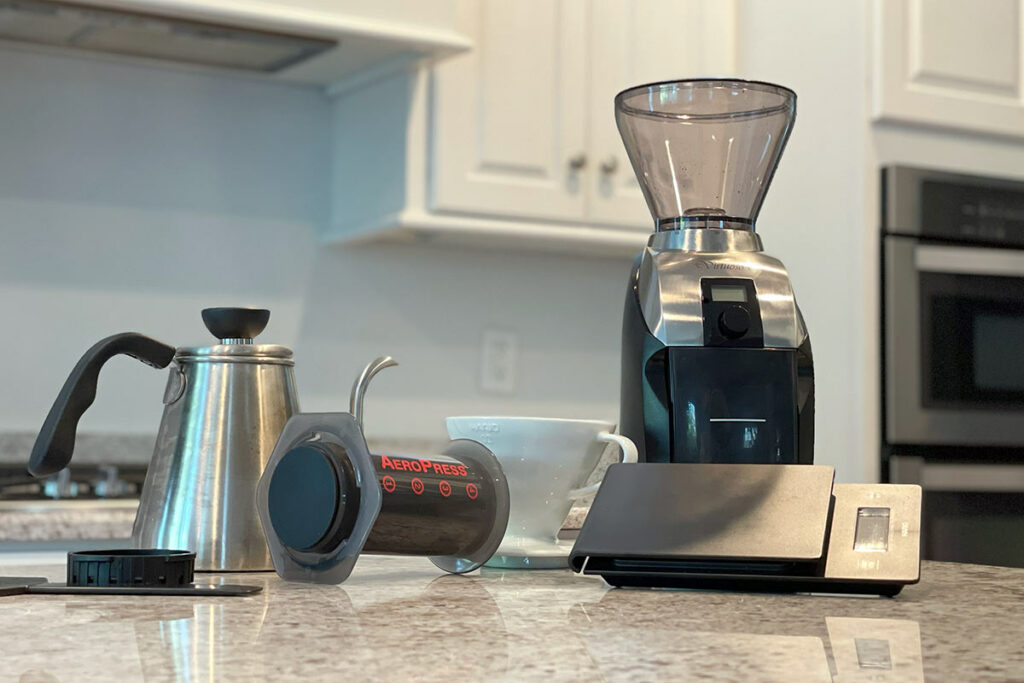
Building Your Coffee Equipment Set: The Beginner Kit
It can be a daunting task to browse through all the brewing equipment and accessories that are on the market for home brewing and choose the right product. When starting off in coffee, I certainly had no idea what equipment to buy. This article comprises a summary of my advice and recommendations when starting down the coffee journey to build the perfect brewing kit with a primary focus on manual brewing devices and accessories.
The two biggest factors in deciding what equipment should you invest are:
- Your Budget
- The amount of time you would want to invest in brewing coffee
First, let’s begin with the key pieces of equipment you will need to purchase when getting started to make a quality, consistent cup of coffee at home.
New to Making Coffee at Home?
Check out these articles to get started.
The Brewer
The brewer you choose will depend on the method of brewing you would want to begin your coffee journey with. The two most commonly used brewing methods are pour over or percolation method and the immersion brewing method. There are a few hybrid brewers available, as well, and I will touch on them below.
Pour Over or Percolation Brewers
Pour over or percolation brewers are loved by everyone in the specialty coffee world for the clean cups of coffee they produce. They do take a bit of practice to get good, consistent cups of coffee but once you do get the hang of it you will not be able to stop. Pour over brewers involve quite a bit of interaction with the brewing process as compared to an immersion brew. If you feel you might not be ready for such a commitment each morning you might want to consider an immersion or a hybrid brewer instead.
A few examples of pour over brewers include the Hario V60, The Kalita Wave, The Chemex, the ESPRO Bloom Brewer and the list goes on and on.
The Immersion Brewer
The immersion method is pretty simple and involves very little interaction with the coffee while it brews and has the potential to produce great cups of coffee. The cups of coffee made with an immersion brewer tend to have more body and might not be as clean a cup as the percolation brew. On the bright side, immersion brews are much easier to get right as they involve little or no technique in brewing the coffee.
A few examples of immersion brewers are the French Press and the Turkish Ibrik.
The Hybrid Brewer
Hybrid brewers generally tend to sit between the pour over and immersion brewer and can combine the experiences one might encounter with either the pour over or the immersion methods. Though it won’t be the best of both worlds kind of a scenario it does produce great cups of coffee with a little bit of effort and is pretty forgiving if you may make a few mistakes when perfecting your technique.
A few examples of hybrid brewers include the AeroPress, The Clever Dripper, the Hario Switch, the Bonavita Immersion Brewer, and the Delter Press.
In summary, if you feel you want to have a certain level of control on your brew but want to start off easy, then the hybrid brewer would be an ideal start. The Immersion brewers, like the French Press, are relatively inexpensive and are a really simple to use. The pour over brewers have a wide price range and also require a bit of patience to get the brew method right but the whole brewing process is really fun and enjoyable.
Weighing Scale
The weighing scale is really important to consistently make good coffee. If you make a coffee that you like, it is important to know the coffee to water ratio and the total brew time irrespective of the brew method you use. If you do not end up liking the coffee you know the parameters used to make the cup and in turn it will help you change your recipe to brew a better cup next time.
If you search for coffee scales on the internet you might find some exorbitantly expensive scales (they are expensive for a reason but not something that’s relevant here) but you don’t necessarily need to get those. All you need is a kitchen scale that can give you a dosage in grams (an accuracy of 0.1g is generally preferred). This is because coffee ratios are generally 1:15, 1:16, 1:17, etc, which means that for every gram of coffee you add you will add 15, 16 or 17 grams of water respectively. Hence it is important to dose your coffee more accurately as the margin for error is less and compared to the margin for adding your water.
The Kettle
Coffee aficionados tend to use a gooseneck kettle which is really helpful in maintaining control of the rate at which water gets poured onto the coffee especially while brewing a pour over. When brewing either with the immersion or the hybrid methods the gooseneck kettle is of little of no use however. Having a regular electric kettle or a stove top kettle is helpful because it will help you in adding water to the coffee when the water is hot. Transferring water from one container to the other to start your brew will lose a lot of temperature in doing so and might under-extract the coffee. You don’t need to get really fancy with the kettles, you can start with a simple kettle and gradually make your way to the fancier ones.
The Grinder
We know that the fragrance of freshly ground coffee is really romanticized in today’s time and rightly so. Grinding coffee using a poorly built coffee grinder will actually yield poorer results as compared to pre-ground coffee. Coffee roasters generally use high end grinders for grinding the coffee for the right brew method. It’s better to buy smaller quantities of pre-ground coffee rather than invest in a bad grinder.
Once you are ready to invest in a grinder, buy a good entry level burr grinder that has a reputation of giving good results. A hand grinder is a good way to get more value when starting out because you will get a better quality hand grinder for less than an electric grinder. One big thing to note is to not use a blade grinder. Blade grinders are not consistent, so you will never be able to get a well-extracted cup of coffee with them. You can learn more about the importance of a burr grinder in our article on the Basics of Making Great Coffee.
There you go! You can now pick and choose your kit depending on the budget and time you want to invest in your coffee routine.

Upgrading Your Coffee Equipment Set
This section assumes you have been brewing coffee for awhile (and have the hang of it) and that you have each piece of equipment from the “Getting Started” kit above.
Now when it comes to the brewer itself there is no real upgrade. Each type of brewer has its unique properties to it and can help bring out certain qualities in a cup (i.e. bigger body, cleaner cup, etc.). The basics for brewing coffee remain the same though, all that changes is how you play with the variables to achieve great cups of coffee.
Let’s illustrate this with an example. Let’s assume I have been brewing with a French Press or an AeroPress and now I would like a new challenge, I might want to buy a pour over brewer to expand my brewing skills. Another example might be that, I am using a Hario v60 pour over brewer and I want to try something new but I really enjoy the cups of coffee a pour over brewer creates, I might opt for a brewer with a different brewer geometry like a Kalita or a Fellow Stagg.
If you are at stage where you want to try something totally new then I would recommend using the vacuum style brewers like the syphon or a Moka Pot. Since you do know how to make good consistent cups of coffee this might be a new challenge and an interesting one too.
If you have an extensive coffee brewer collection and would like to learn something new and different then home espresso may be a good next step.
Upgrading the rest of the kit is pretty simple, its all about chasing that next step of perfection and consistency. It all boils down to how evenly I can extract my coffee and how consistent can I be.
- For achieving a more even distribution in the grind size you will have to upgrade your grinder that has a reputation to produce the same.
- A kettle that can maintain a certain temperature throughout the brew so that your brews are that much more repeatable.
- You will want a much more sensitive weighing scale that can quickly show you the change in the weight as you pour which will in turn help you control your rate of pouring and achieve more consistent brews.
The Bottom Line
While the options on at home coffee products can be overwhelming, I hope this guide has been helpful to simplify the process and help you get started with making coffee at home or take your at home coffee hobby to the next level. Remember with every purchase, that it should help you produce a better cup of coffee or do something different from what you current equipment can do. If it can’t, then it’s just a piece of coffee souvenir.
